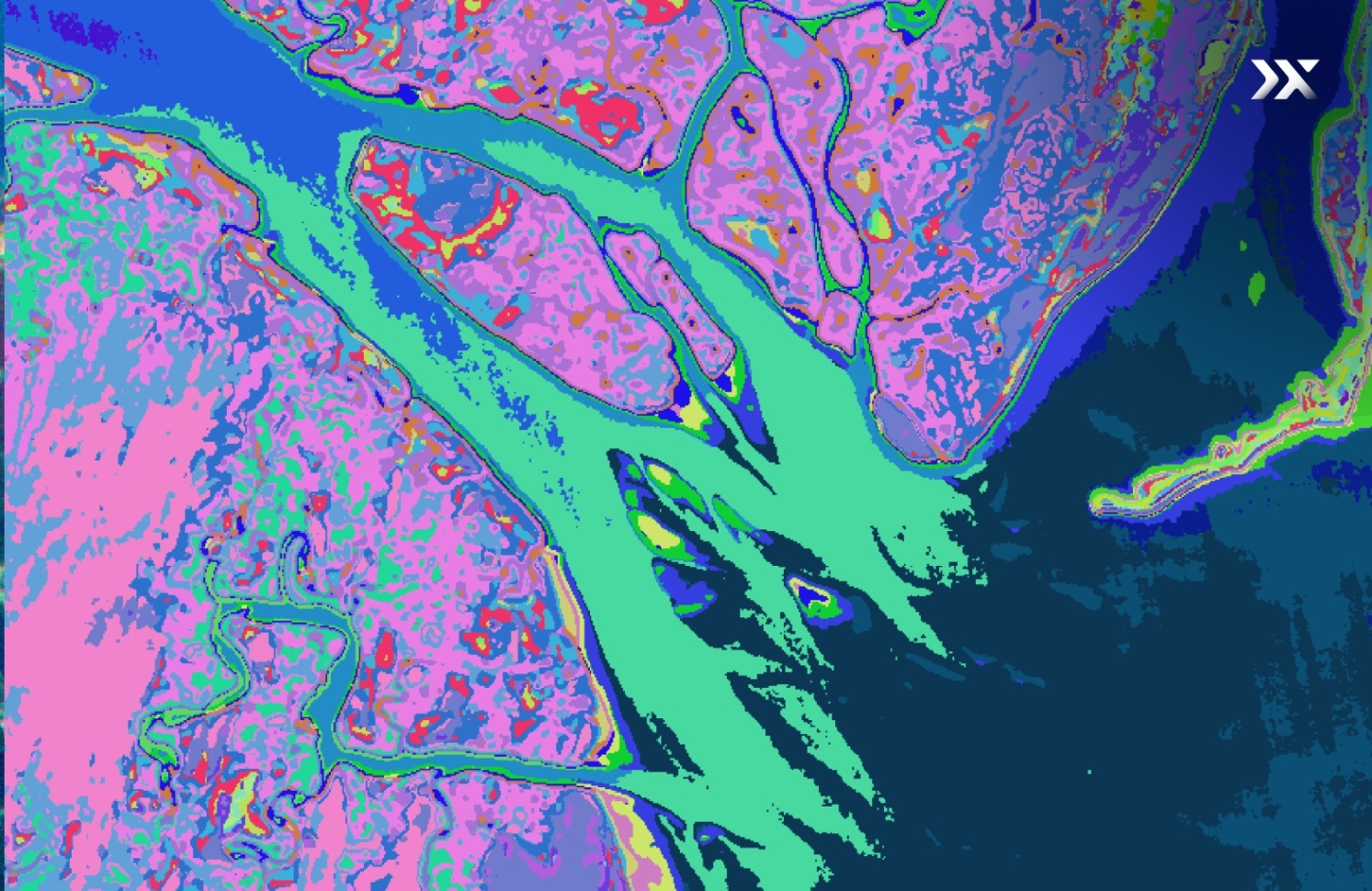Spectra of Rising Greenhouse Gas Emissions: Unveiling Solutions with Hyperspectral Imaging

As we quickly approach the future of urban and environmental monitoring, hyperspectral imaging technology offers precise insights into the composition and distribution of gases in the Earth's atmosphere. At Pixxel, we plan to achieve this feat through a constellation of hyperspectral imaging satellites and a vision to create a planet-wide health monitor.
Monitoring Greenhouse Gases: Pixxel’s Mission
Greenhouse gases (GHGs), including carbon dioxide (CO2), methane (CH4), and nitrous oxide (N2O), contribute to atmospheric heat-trapping, enhancing the greenhouse effect and global warming. Over the past century, GHG emissions have surged by a staggering 436%, presenting significant environmental and socioeconomic risks. In response to this pressing challenge, industries are under pressure to implement robust emissions monitoring and reduction efforts.
To ensure compliance with internationally spanning protocols, companies are now obligated to record and report their emissions. Programs like the Greenhouse Gas Reporting Program (GHGRP) in the United States and the Corporate Sustainability Reporting Directive (CSRD) in the European Union oblige large companies to regularly disclose information about their activities and their environmental impact. Similarly, international standards established by organisations such as the International Organization for Standardization (ISO) provide guidelines for the coherent quantification, monitoring, and reporting of GHG emissions and their reduction.
These programs are not merely formalities but serve as supporting tools for achieving ambitious goals, like Net-Zero emissions. Major players in various industries, including Microsoft, Vodafone, and Sasol, have taken pledges to reduce emissions across all operational phases (i.e., scope 1, 2, and 3 emissions) and reach net-zero targets.
In addition, industries like oil and gas are investing in monitoring technologies and data analysis to ensure environmental compliance, particularly along their infrastructure’s right of way. Such environmental monitoring initiatives include assessing air quality, vegetation health, and the detection of leaks and fugitive emissions along pipeline corridors.
Remote sensing serves as a valuable tool towards achieving these targets due to their ability to promptly cover vast areas. In particular, the development of hyperspectral imaging technology is promising within the field of emissions monitoring.
Hyperspectral Imaging: Emissions Monitoring with Unmatched Precision
Satellite-based sensors have revolutionised GHG monitoring by providing valuable data on their concentration, spatial distribution, and temporal variation at both local and global scales. This is made possible through the unique absorption properties of GHGs in the infrared part of the electromagnetic spectrum, which causes the warming effect. However, the presence of atmospheric aerosols can pose challenges by introducing spectral interference due to their scattering and absorption of solar radiation.
The superiority of hyperspectral imaging over multispectral imaging lies in the specificity of its wavelength bands, resulting in enhanced spectral sensitivity. This sensitivity allows hyperspectral sensors to detect emissions at lower concentrations and allow for the differentiation of atmospheric aerosols. With these strengths, hyperspectral imaging is well-suited for pinpointing emission sources and identifying gas releases, even at relatively low levels. Notably, this technology plays a crucial role in detecting methane, a potent GHG crucial for global heating.

Besides the listed compounds, hyperspectral imaging is also capable of detecting hydrofluorocarbons (HFCs), sulfur hexafluoride (SF6), and nitrogen trifluoride (NF3).
Revealing Methane Bombs and Leaks through Hyperspectral Imaging
Methane bombs are gas fields where leakage alone from the full exploitation of resources poses a significant threat to the climate. The Guardian has exposed approximately 55 methane bombs worldwide, representing fossil fuel extraction sites where future gas leaks could release methane equivalent to 30 years’ worth of all US GHG emissions.
Methane, a potent GHG, accounts for a staggering 25% of global heating, making them the biggest threat to achieving the ambitious 1.5 oC target outlined in the Paris Agreement. While addressing methane emissions has gained political support and led to a global methane pledge as part of the UN’s Cop26 initiative, it’s disheartening that some key countries have not yet committed.
Nevertheless, the growing role of satellite-based detection methods, particularly hyperspectral imaging, combined with increasing political momentum, provides hope for effectively tackling this issue.

Hyperspectral sensors, equipped on Earth observation satellites, can detect and quantify methane concentrations in the atmosphere. This technology enables the identification of methane hotspots and near-real-time monitoring of emission levels. Thanks to its capability to resolve fine methane absorption features in the shortwave infrared (SWIR) region, hyperspectral satellite imagery offers a detection limit ranging from approximately 100 to 500 kg per hour.
In contrast, due to the limited sensitivity of their coarse SWIR bands, multispectral sensors exhibit higher expected detection thresholds, ranging between 1800 to 2000 kg per hour, even under favourable conditions. Hyperspectral imaging, with its finer spectral resolution, outshines multispectral sensors in terms of precision and accuracy.
Efficient and timely detection of methane leaks using hyperspectral imaging equips us to take swift action in addressing emission sources. By identifying super-emitter sites and monitoring their activities, targeted measures can be implemented to reduce methane releases. Additionally, near-real-time monitoring facilitates the evaluation of emission reduction efforts and supports decision-making processes concerning climate policies and regulations.
Along with its effectiveness in detecting methane emissions, hyperspectral imaging also plays a crucial role in monitoring other GHG emissions, enabling early detection of leaks and high-emission sources. By swiftly identifying and quantifying these emissions, hyperspectral imaging empowers proactive measures to mitigate the environmental impact of GHGs.
Pixxel's Hyperspectral Satellites for Net-Zero Emission Solutions
The deployment of Pixxel’s hyperspectral satellites represents a groundbreaking solution for effective space-based GHG emissions monitoring, empowering industries to implement mitigation strategies against climate change. The technical capabilities of the sensors provide a foundation to develop tailored solutions across a wide range of use cases, from monitoring power plant emissions to detecting fugitive emissions along pipelines.
Pixxel’s hyperspectral satellite constellation plays a vital role in closing the gap in technologies necessary to achieve net-zero emissions and offers diverse applications across several industry vertices, such as agriculture and mining as well. Get in touch with our sales team to find out how your organisation can benefit from hyperspectral imaging.




